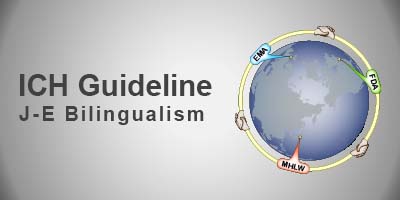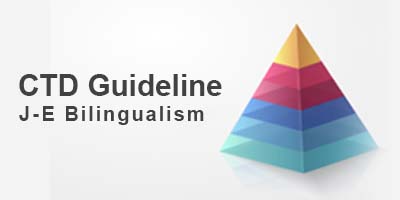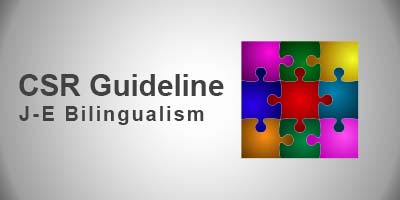医薬審第655
平成11年4月5日
ICH Harmonised Tripartite Guideline
Having reached Step 4 of the ICH Process at the ICH Steering Committee meeting on 2 September 1998, this guideline is recommended for adoption to the three regulatory parties to ICH
動物を用いた慢性毒性試験の投与期間について(げっ歯類及び非げっ歯類の毒性試験)
DURATION OF CHRONIC TOXICITY TESTING IN ANIMALS (RODENT AND NON RODENT TOXICITY TESTING)
1.目的
本ガイダンスの目的は,医薬品の安全性評価の一環として,げっ歯類及び非げっ歯類の慢性毒性試験に適用される考え方を提示することにある。ガイダンスは法的に規制されるものではなく,申請者が代替法の妥当性を述べることにより,その方法を採用することができる。
1. OBJECTIVE
The objective of this guidance is to set out the considerations that apply to chronic toxicity testing in rodents and non rodents as part of the safety evaluation of a medicinal product. Since guidance is not legally binding, an applicant may submit justification for an alternative approach.
2.適用範囲
本ガイダンスは,「バイオテクノロジー応用医薬品の非臨床試験ガイダンス」ですでにカバーされている例えばモノクローナル抗体や組換えDNA タンパクなどを除く医薬品の開発を対象としている。
2. SCOPE
This guidance has been prepared for the development of medicinal products with the exception of those already covered by the ICH Guideline on Safety Studies for Biotechnological Products, e.g., Monoclonal antibodies, recombinant DNA proteins.
3.背景
1991年に開かれた第1回日米EU 医薬品規制調和国際会議(ICH)において,3極(EU,日本,米国)での慢性毒性試験の方法について評価がなされ,げっ歯類については,6ヵ月というハーモナイズされた投与期間を支持するとの科学的合意が得られた。しかし,非げっ歯類を用いた慢性毒性試験の投与期間に関しては合意に達しなかった。
投与期間がハーモナイズされていないために,製薬会社は新しい医薬品を開発する際に,一部で6ヵ月と12ヵ月の両方の試験の実施を余儀なくされている。ICH の目的としては,医薬品の開発において人々の健康を守るための保護的役割を維持する一方,試験の重複を避けるか,あるいは減らして,物的資源および動物,ヒトを含めた生物資源のより経済的な使用を確保することにあるので,さらなる科学的評価がなされた。
EU,日本,米国の行政当局の各々が,非げっ歯類の慢性毒性試験について単一の投与期間を設定できるかどうかを決めるための再評価を行った。その分析結果から,16事例において6ヵ月と12ヵ月のデータをさらに詳細に評価すべきことが判明した。
この評価は,3極の当局側担当委員の合同審議・評価の形で実施された。
3極の会議において解析に供せられたいくつかの事例で,12ヵ月において追加すべき所見は得られなかった。
他のいくつかの事例では,投与期間の差のみにより6ヵ月と12ヵ月の所見に差が生じたと結論できるかどうか,試験のデザインと内容の比較に関して,行政担当者間で完全な一致が得られなかった。
多くの事例において,12ヵ月で観察されたが6ヵ月では観察されなかった所見があった。それらの所見は9ヵ月の試験では検出できていたであろうと結論された。異なった投与期間の試験でみられた所見の違いについていろいろな見解があることが明らかとなった。これらの所見の臨床上の意義については意見の一致をみるには至らなかった。
12ヵ月間の試験は通常必要ではなく,9ヵ月よりも短い期間の試験でも十分な場合もあろう。
EU においては,改訂されたCouncil Directive 75/318/EEC に基づいて,非げっ歯類では,6ヵ月間の試験でもよい。重複をさけるため,それよりも長い期間の試験が実施されている場合には,6ヵ月の試験を実施する必要はない。
3. BACKGROUND
During the first International Conference on Harmonisation in 1991, the practices for the testing of chronic toxicity in the 3 regions (EU, Japan, and US) had been reviewed. Arising from this it emerged that there was a scientific consensus on the approach for chronic testing in rodents, supporting the harmonised duration of testing of 6 months. However, for chronic toxicity testing in non-rodents, there were different approaches to the duration of testing.
The lack of harmonised duration led to the need for pharmaceutical companies to perform partially duplicative studies for both 6 and 12 months duration when developing new medicinal products. As the objective of ICH is to reduce or eliminate the need to duplicate testing during development of medicinal products and to ensure a more economical use of material, animal and human resources, while at the same time maintaining safeguards to protect public health, further scientific evaluation was undertaken.
Each of the regulatory authorities in EU, Japan and US undertook a review to determine whether a single duration for chronic toxicity testing in non-rodents could be identified. From this analysis it emerged that in 16 cases a more detailed evaluation of 6 versus 12 months data should be undertaken.
This evaluation was conducted as a joint exercise by the competent authorities in the 3 regions.
In some of the cases analysed at the tripartite meetings, there were no additional findings at 12 months. For some other cases, there was not complete agreement among the regulators with respect to the comparability in study design and conduct to allow assessment of whether there were differences in the findings at 6 and 12 months due to duration of treatment alone.
In a number of cases there were findings observed by 12 months, but not by 6 months. It was concluded that these would, or could have been detected in a study of nine months duration. Varying degrees of concern for the differences in findings detected between the studies of different durations were expressed. An agreement on the clinical relevance of these findings could not be reached.
Studies of 12 months duration are usually not necessary and studies of shorter than 9 months duration may be sufficient.
In the EU, studies of 6 months duration in non-rodents are acceptable according to Council Directive 75/318/EEC, as amended. To avoid duplication, where studies with a longer duration have been conducted, it would not be necessary to conduct a study of 6 months.
4.日米欧3極における医薬品開発計画のための慢性毒性試験の投与期間に関するガイダンス
新規の医薬品における慢性毒性試験の重複を避け,かつ単一の開発計画を可能にするために,上記に述べた非げっ歯類データの詳細な分析及び評価の結果,並びにげっ歯類についてはICH1での合意に基づき,次の試験が3極における申請時に受理される。
1)げっ歯類
6ヵ月間の試験
2)非げっ歯類
9ヵ月間の試験
4. GUIDANCE ON DURATION OF CHRONIC TOXICITY TESTING FOR TRIPARTITE DEVELOPMENT PLAN
Arising from the extensive analysis and review of the above mentioned data in non-rodents and based upon the achievements of ICH1 for testing in rodents, and so as to avoid duplication and follow a single development plan for chronic toxicity testing of new medicinal products, the following studies are considered acceptable for submission in the 3 Regions:
1) Rodents:
a study of 6 months duration;
2) Non-rodents:
a study of nine months duration.










